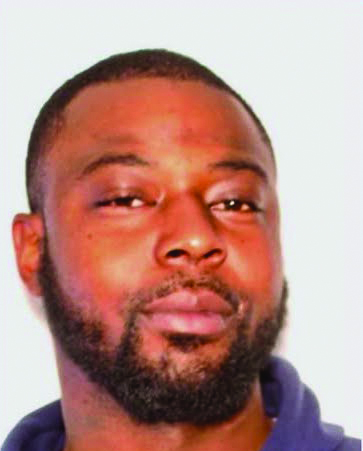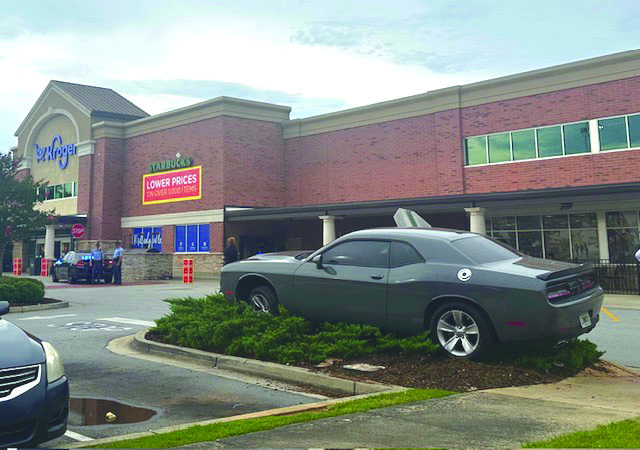Milledgeville native raising awareness of rare disorder that changed his life
Published 1:00 pm Sunday, September 19, 2021

- Andrew Williams
Trending
Andre Williams had never heard of Stevens-Johnson Syndrome (SJS) until just a few years ago. Now, he’s doing his part to raise awareness about the rare disorder that changed his life in 2017.
Williams, a Milledgeville native, had studied criminal justice at Valdosta State University. He was on a traveling assignment in Seattle, Wash. in 2017, but he had flown back to Georgia for a month. He had big plans for a trip to celebrate his brother’s birthday.
Not long before, Williams had taken a medication called Bactrim and had come down with thrush in his mouth. While that symptom alone didn’t seem very serious, several others soon followed. Before long, he began to notice sensitivity to light. Next, a skin rash started, and his skin eventually began discoloring.
Williams, now 28, said he went to seek medical treatment, never expecting the journey he would soon endure. He was transferred to Joseph M. Still Burn Center at Doctors Hospital in Augusta, where skin samples helped a medical team diagnose him with SJS.
According to The Mayo Clinic, SJS is “a rare, serious disorder of the skin and mucous membranes. It’s usually a reaction to medication that starts with flu-like symptoms, followed by a painful rash that spreads and blisters.”
The syndrome is classified as a medical emergency and usually does require hospitalization. Though doctors sometimes aren’t able to identify the exact cause of the illness, it is most often triggered by a medication, an infection, or both.
Trending
Williams spent a month and a half in the hospital. He recalls being in extreme pain in the Intensive Care Unit, where he required medication, fluids and close monitoring. What started out as symptoms of a skin rash would leave 85 percent of his body burned. His was a severe case of SJS called Toxic Epidermal Necrolysis (TEN).
He remembers the first time he saw his face at The Burn Center.
“When I saw myself, I didn’t know that person.”
The reality of the condition had set in.
“It was very serious, and it was very heartbreaking.”
Williams said the pain wasn’t just physical; it took an emotional toll as well.
“It kind of makes you feel disgusting, and I say that because when you have visitors, they have to wear gloves and masks and bodysuits and hair covers, so you think you’re contagious,” Williams said.
He didn’t want people to visit because he didn’t want them to see him. His parents and aunt came, but he asked them not to tell anyone else.
“I’m not going to say I was embarrassed, but people never see me down because I’m always smiling. So, at that moment in time, it was like I was being defeated.”
He said it took a visit from his brother to help him begin to heal. The two had been video chatting, but Williams had not let him see his face. When he did, it was an emotional moment for the brothers. His brother’s best friend, a nurse, was with him, and Williams remembers her talking to him just as she always had, and so his brother began doing the same. When he visited, the two made jokes, laughed and sang together. It was the first time Williams had laughed, and the swollen lymph nodes in his neck did make it painful.
“It was hurting so bad, but it felt so good to laugh,” he remembered.
After his release from the hospital, Williams knew he wanted to do something to spread awareness about SJS, but he wasn’t exactly sure where to start.
“I had always wanted to do it, but I didn’t know if I could. Back when I first got out of the hospital, of course, I didn’t want to be seen because my body was still going through changes, and I was still getting used to myself.”
But he remembered something his grandmother had said to him before she passed away in 2017.
“Before she was passed, she was like, ‘Baby, you got a story to tell,’ and my mom said the same thing.”
Early this year, Williams said he knew the time had come. He said he often gets questions about why he wears his shades, and when he tells people, most have never heard of SJS. He knew that he could help change that.
Williams has organized three different events so far this year. Each was a fundraiser that also focused on raising awareness. Funds from each event were to be donated to the burn center in Augusta. August has also been declared Stevens-Johnson Awareness Month in the City of Milledgeville, thanks to a proclamation written by Williams. He also began managing an Instagram page called Surviving_SJS where he posts videos of other survivors and their stories.
“It has different stories of different people who’ve gone through the same thing that I went through but with different medications.”
As far as management of the disease, Williams now knows that he is not to take sulfa since that is the medication that triggered the condition for him.
“It does not just come from sulfa, but sulfa is one of the leading causes of it,” he said. “Any kind of infection can cause it. … It varies from person to person.”
Williams does still have problems with his eyes. He struggles with light sensitivity and vision that comes and goes in his left eye.
It’s all a part of learning to live with what he calls his “new norm.” Just recently, he had a personal victory when he was able to get back to a passion of his that he had not been able to participate in since his diagnosis. Williams had always been involved in theatre, but the light sensitivity made it difficult after his illness. Theatre Macon worked with him to adjust the lighting so that it wouldn’t hurt his eyes, and he was able to perform in his first show.
As difficult as it has been, Williams said he knows that he went through this for a reason, and he said he is growing to love the person that he is now.
“I feel like I’ve gone through this situation for a reason, to spread awareness,” he said. “And you know, God don’t put nothing on you that you cannot bear. So, I live by that now, and I pray, and I pray, and I pray.”





